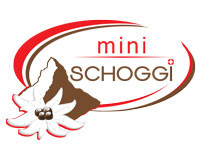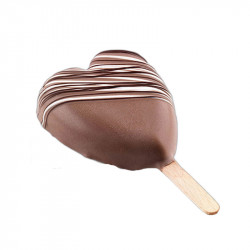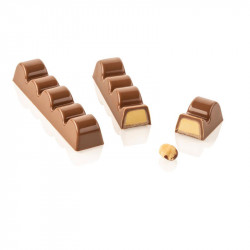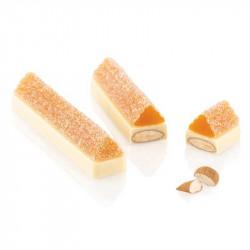A Mail deliveries
Order by 4 pm = delivery the next working day.
Free delivery
From CHF 100 purchase
-
MenuBack
-
Online Store
-
-
-
- Couverture
- Temperature control units
- Aids for chocolate
- Chocolate molds
- Praline fillings
- Chocolate ingredients
- Praline hollow body
- Chocolate colors
- Chocolate tattoos
- Chocolate packaging
- Bean to Bar
- Material for cutting chocolates
- Batons with Kirsch
- Airbrush for chocolate
- High Heels Accessories
- Textured films for chocolate
- Chocolate fountain & fondue
-
-
-
-
-
- Cakes Fillings & Ingredients
- Fondant & Marzipan
- Cakes tools
- Cake rings
- Silicone molds
- Decorative mats
- Baking pans for cakes
- Cake stand
- Cakes packaging
- Airbrush for cakes
- Sugar flowers accessories
- Cake Topper & Wedding Figurines
- Cakes dummies
-
-
-
-
-
-
-
-
-
-
-
-
-
-
-
-
-
-
-
-
-
-
-
- Baking chocolate
- Glucose & Sorbitol
- Cocoa beans
- Cocoa nibs
- Monin syrup
- Champagne & Alcohols
- Freeze dried fruits
- Cake & cake glaze
- Flours & baking ingredients
- Chocolate coating & chocolate
- Milk powder
- Granules
- Nuts & Nougat
- Fruit puree
- Creams & Fillings
- Egg yolk & egg white
- Fruit powder
- Special ingredients
- Fondant & Flower Paste
-
-
-
-
-
-
-
- Punching, cutting & embossing
- Mixing bowls & whisks
- Chocolate material
- Thermometer & Burner
- Gloves & Protective Material
- Smoothing & Modeling
- Roll out bar
- Dough scraper & horn
- (Flour) sieves
- Brushes & Tweezers
- Cake turntable
- Spatula & Spatula
- Silicone embossing molds
- Insert strips & cake slices
- Measuring cup
-
-
-
-
-
-
-
-
-
-
-
-
-
-
-
Schablonen & Stencils
-
-
-
-
-
-
-
-
-
-
-
Courses
-
-
- Current courses
- Praline courses
- Chocolate courses
- Chocolate kiss course
- Macaron courses
- Cake courses
- Baking courses
- Patisserie courses
- Ice cream course
- Guetzli, Cookie & Confectionery Courses
- Bread courses
- Pasta courses
- Apéro course
- Cooking courses
- Cupcakes courses
- Éclair course
- Courses in Zurich - Adliswil
- Children's courses
-
-
- Team Events
- Hen Night
- Retail Store
-
About Us
-
-
-
DirectionsDownload relevant PDF now.
-
-
-
Recipes blog
-
-
Recipes Blog
-
-
-
Shipping and Payment
-
List of products by brand Silikomart
Silikomart is the specialist when it comes to silicone moulds. In addition to cake, patisserie and decorative silicone moulds, you will also find professional polycarbonate moulds for chocolate bars and pralines.
There are 54 products.
Active filters
Silicone is an incredibly versatile material and therefore also very popular in the kitchen. There is everything from silicone embossers for candle decorations to silicone scrapers and siliconised non-stick baking paper. Silikomart specialises in the production of various moulds made of silicone but also other materials. All products are manufactured in Italy, where the company has its origins. The ever new designs also come from Italy and enable professionals as well as novices to create impressive creations.
Silicone moulds
Silicone offers a lot of advantages, first of all the wide and simple application. Cake dough, ice cream, mousses and similar masses can be filled directly into the mould without any further preparation, no flouring or greasing is necessary. With a heat resistance of -60 to +230 degrees Celsius, the moulds are perfect for the freezer as well as the oven. Even quick changes, for example from the freezer directly into the oven or use in the microwave, cannot harm them. However, the grill function, use with direct heat sources such as fire or the hob and handling with a knife in the mould should be avoided.
Silikomart uses a very high-quality LSR liquid silicone for all moulds. It is BPA-free, easy to shape and has no flavour of its own. It is therefore ideal for all kinds of food. If the mould does smell a little, has white dots or a slightly whitish film, this does not matter. This is an odour or a substance from a mass previously used in it or a dishwashing detergent that is too aggressive. Silicone is very porous and so the tiny holes can fill with butter or cocoa butter, for example. In this case, simply soak the mould in boiling water, with a little soap if necessary, to dissolve the stuck substances. A whitish haze or an undesirable smell can also be counteracted by placing the mould in the oven at 200 to 220 degrees for an hour. Normally, however, the silicone moulds can simply be cleaned in the dishwasher.
Since silicone is very malleable, the mould can also be stored well. Even if it has been folded or dented, it will return to its original shape in no time at all.
Another advantage of this flexibility can be seen when unmoulding. To do this, the mould is pulled apart slightly at the edge so that the mass inside is loosened a little and then turned out. If necessary, the mould can also be turned completely upside down, so that even the slightly stickier treats come out easily.
To get the best results, there are a few things to keep in mind. Some moulds come with a plastic frame. This is also temperature-resistant and serves to stabilise the soft silicone. If available, attach it to the silicone mould. Then fill in your mass, which can be dough, cream, ice cream or various other masses. Especially with creams, mousses and puddings, it is advisable to fill the mould to the brim. While most doughs still rise a little, these masses keep their shape. Only by filling the mould can all the details be seen afterwards, and it is also possible to achieve a beautifully straight edge.
Once the mass has been filled, the silicone mould is either placed on a baking tray or lifted up a little by hand and tapped onto the work surface. You don't have to be squeamish about this, as the fine strokes transport air bubbles up through the mass and the air escapes. This way there are fewer air pockets later and the details of the mould are better preserved.
When it comes to shaping, there is one last piece of advice. If the contents have been frozen, you should wait until everything is really well chilled. If the dough has been baked, it is best to let it cool completely in the mould. In this way, you can guarantee that the details will be beautifully preserved and that parts of your mixture will not remain in the mould.
Polycarbonate moulds
Silicone moulds are excellent for dough, creams and ice creams, but unfortunately not for chocolate. As they are very flexible, they shrink a little together with the chocolate when it cools down, making it difficult to mould. In addition, couverture penetrates the fine pores and the surface of the silicone mould cannot guarantee a nice shine. Fortunately, there are excellent polycarbonate moulds for couverture. These are moulds made of very stable and high-quality plastic, which does not expand or contract due to temperature changes.
With the right use, polycarbonate moulds guarantee easy moulding and a beautiful shine on your creations. The mould should be nice and clean, so it can be cleaned with warm water, a non-abrasive sponge and mild detergent. It must then be dried completely. Use a fine paper handkerchief or a piece of non-linting
The individual depressions are then polished out well with a fine paper handkerchief or a piece of non-linting cotton wool. This gives the couverture its beautiful shine. You should now only touch the mould by the frame, otherwise fingerprints will be visible on the pralines, chocolate bars or chocolate tablets afterwards.
Then brush the mould with couverture. This must be tempered, you can find detailed instructions on our blog. Make sure that there are no air holes in the corners of the mould, as you will see this very clearly on the back of the mould.
Fill the brushed mould completely with couverture. Then tap the mould with a chocolate mallet or the back of a spatula, so that air bubbles rise to the top. If you want to create chocolate bars or solid bars, clean the mould with a metal horn and put it in the fridge like this. Of course, you can also mix dry ingredients with the couverture before filling or sprinkle some decoration on top after filling.
If you want to make chocolates or filled chocolate bars, invert the mould filled with warm couverture over the bowl of the tempering machine or over a clean sheet of baking paper. Again, tap the frame to remove all excess couverture. Use a metal horn to scrape off the chocolate on the surface of the mould, then place the cleaned mould in the fridge. Then pipe in a suitable filling with the piping bag to about 2-3 mm below the rim. Close the cavities with couverture and a cornet paper or with a ladle and the metal horn and clean the mould again from chocolate on the surface. Tap the mould briefly on the work surface to make the bottoms nice and smooth, and put it in the fridge. After about half an hour, you can remove the mould, twist it a little and turn it out onto clean baking paper. If the mould has been prepared correctly and the couverture has been tempered perfectly, the shiny pralines, chocolate bars and chocolate bars will come out without any problems and can be wrapped up nicely or enjoyed straight away.










